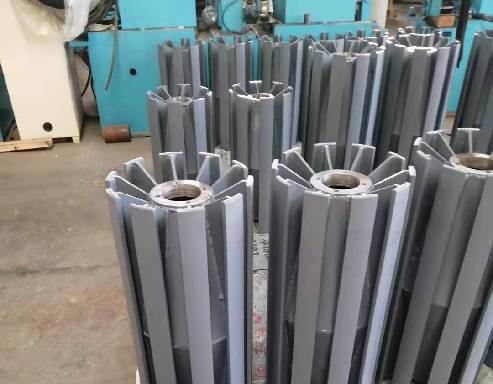 Afrikaans
Afrikaans  Albanian
Albanian  Amharic
Amharic  Arabic
Arabic  Armenian
Armenian  Azerbaijani
Azerbaijani  Basque
Basque  Belarusian
Belarusian  Bengali
Bengali  Bosnian
Bosnian  Bulgarian
Bulgarian  Catalan
Catalan  Cebuano
Cebuano  Corsican
Corsican  Croatian
Croatian  Czech
Czech  Danish
Danish  Dutch
Dutch  English
English  Esperanto
Esperanto  Estonian
Estonian  Finnish
Finnish  French
French  Frisian
Frisian  Galician
Galician  Georgian
Georgian  German
German  Greek
Greek  Gujarati
Gujarati  Haitian Creole
Haitian Creole  hausa
hausa  hawaiian
hawaiian  Hebrew
Hebrew  Hindi
Hindi  Miao
Miao  Hungarian
Hungarian  Icelandic
Icelandic  igbo
igbo  Indonesian
Indonesian  irish
irish  Italian
Italian  Japanese
Japanese  Javanese
Javanese  Kannada
Kannada  kazakh
kazakh  Khmer
Khmer  Rwandese
Rwandese  Korean
Korean  Kurdish
Kurdish  Kyrgyz
Kyrgyz  Lao
Lao  Latin
Latin  Latvian
Latvian  Lithuanian
Lithuanian  Luxembourgish
Luxembourgish  Macedonian
Macedonian  Malgashi
Malgashi  Malay
Malay  Malayalam
Malayalam  Maltese
Maltese  Maori
Maori  Marathi
Marathi  Mongolian
Mongolian  Myanmar
Myanmar  Nepali
Nepali  Norwegian
Norwegian  Norwegian
Norwegian  Occitan
Occitan  Pashto
Pashto  Persian
Persian  Polish
Polish  Portuguese
Portuguese  Punjabi
Punjabi  Romanian
Romanian  Russian
Russian  Samoan
Samoan  Scottish Gaelic
Scottish Gaelic  Serbian
Serbian  Sesotho
Sesotho  Shona
Shona  Sindhi
Sindhi  Sinhala
Sinhala  Slovak
Slovak  Slovenian
Slovenian  Somali
Somali  Spanish
Spanish  Sundanese
Sundanese  Swahili
Swahili  Swedish
Swedish  Tagalog
Tagalog  Tajik
Tajik  Tamil
Tamil  Tatar
Tatar  Telugu
Telugu  Thai
Thai  Turkish
Turkish  Turkmen
Turkmen  Ukrainian
Ukrainian  Urdu
Urdu  Uighur
Uighur  Uzbek
Uzbek  Vietnamese
Vietnamese  Welsh
Welsh  Bantu
Bantu  Yiddish
Yiddish  Yoruba
Yoruba  Zulu
Zulu Understanding the Importance of Conveyor Idlers in Material Handling Systems
Understanding Conveyor Idlers Essential Components for Efficient Material Handling
Conveyor systems are pivotal in various industries, playing a crucial role in transporting materials efficiently and economically. At the heart of these systems lies an essential component known as conveyor idlers. These small yet powerful elements significantly influence the overall performance, durability, and reliability of conveyor belts. Understanding the function and types of conveyor idlers can help organizations enhance their material handling processes.
What are Conveyor Idlers?
Conveyor idlers are rollers that support the conveyor belt and allow it to move smoothly as it carries goods from one location to another. They are designed to minimize friction and wear on the conveyor belt, thus ensuring that materials can be transported with minimal resistance. Idlers are typically installed at various points along the conveyor system at the loading zones, return sections, and at intervals along the entire length of the belt.
Types of Conveyor Idlers
Conveyor idlers come in several types, each suited to specific applications based on the material being transported and the conditions of the operating environment
. The main types of conveyor idlers include1. Flat Idlers These are the most common type and consist of cylindrical rollers mounted on a frame. They support the conveyor belt's carrying side and provide a flat surface for optimal contact with the belt. Flat idlers are suitable for most applications, particularly for transporting bulk materials.
2. Trough Idlers Trough idlers have a V-shape configuration that allows them to hold the conveyor belt in a defined groove. This design minimizes spillage of bulk materials during transport, increasing efficiency and productivity. Trough idlers are predominantly used in mining and bulk handling operations.
3. Return Idlers Located on the underside of the conveyor system, return idlers support the belt as it returns to the loading point. These idlers are typically flat and help prevent sagging, ensuring that the belt maintains proper tension throughout its journey.
4. Impact Idlers Positioned at loading points where materials are dropped onto the conveyor belt, impact idlers absorb the shock and prevent damage to the belt. They are designed with extra cushioning and reinforcement to withstand heavy loads and reduce wear and tear.
conveyor idlers

5. Training Idlers Also known as self-aligning or tracking idlers, these components are crucial in ensuring that the conveyor belt remains centered during operation. They help prevent belt misalignment, which can lead to severe damage and increased maintenance costs.
Importance of Conveyor Idlers
The effectiveness of a conveyor system is heavily reliant on the performance of its idlers. High-quality idlers offer several benefits, including
- Reduced Wear and Tear By providing smooth support for the conveyor belt, idlers minimize friction and extend the lifespan of both the belt and other components within the system.
- Operational Efficiency Well-designed idlers facilitate a smoother conveyor operation, reducing the energy consumption of the entire system. This can lead to significant cost savings over time.
- Enhanced Material Handling With the right idlers, materials can be transported more reliably, with reduced risk of spillage or damage. This reliability is crucial in environments where efficiency is paramount.
- Lower Maintenance Costs Durable conveyor idlers lead to fewer breakdowns and disruptions in production, resulting in lower maintenance needs and costs.
Conclusion
In summary, conveyor idlers may seem like simple components, but their importance in the material handling process cannot be overstated. They play a vital role in ensuring the efficiency, longevity, and effectiveness of conveyor systems. Choosing the right type of idler for specific applications, maintaining them well, and investing in high-quality options can significantly enhance productivity and operational reliability. As industries continue to advance and seek ways to improve their logistics and handling capabilities, the significance of conveyor idlers remains as critical as ever. Proper understanding and management of these components will ultimately lead to safer, more cost-effective, and highly efficient material handling processes.
-
Revolutionizing Conveyor Reliability with Advanced Rubber Lagging PulleysNewsJul.22,2025
-
Powering Precision and Durability with Expert Manufacturers of Conveyor ComponentsNewsJul.22,2025
-
Optimizing Conveyor Systems with Advanced Conveyor AccessoriesNewsJul.22,2025
-
Maximize Conveyor Efficiency with Quality Conveyor Idler PulleysNewsJul.22,2025
-
Future-Proof Your Conveyor System with High-Performance Polyurethane RollerNewsJul.22,2025
-
Driving Efficiency Forward with Quality Idlers and RollersNewsJul.22,2025





























